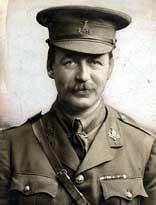Reflections
The Sikes-Pico Accord
Towards the end of the First World War, when it became clear to both warring sides that the end of the Ottoman Empire was near, the British and French governments began to discuss the distribution of the spoils. The pact that was born of those debates was called the ‘Sikes-Pico Accord’.
Hussein understood from McMahon’s letters that the entire Middle East would be in his control, including Israel, Lebanon, Syria and Iraq; whereas in fact McMahon had been very careful in his letters not to specify these areas as part of the pact – on the contrary, he indicated certain parts of Iraq known to be rich in oil, as areas that Britain refused to transfer to Hussein’s control. In an interview for the London newspaper ‘The Times’ around twenty years later, Sir Henry McMahon stated that ‘it was my duty to indicate that I hadn’t promised to include Palestine in the framework of an Arab state. In my opinion Hussein also expected that, and it was very clear to him that Palestine was not part of the pact’. Hussein did not realize this at the time, and since he assumed that Britain was in agreement with all his demands he sent his forces to fight at the side of the British, until the Turks were defeated.
A year after this exchange of letters between McMahon and Hussein, the Sikes-Pico Accord was sealed, effectively dividing the conquered territory in the Middle East between France and Britain whilst guarding the interests of the Russians in the area. The pact was signed on the 13th of Iyar 5676 (1916), a year and half before the end of WWI.
The historic treaty was signed on behalf of Britain by the British representative of the foreign ministry Mark Sikes, and on behalf of France by Charles Francosa George Pico. The pact was signed in secret, and it stated clearly that France would receive the north-east section of Turkey, Lebanon, Syria and Upper Galillee, whereas Britain would receive Iraq, the Persian Gulf, Eastern Trans-Jordan until Iran, the South, and another enclave in the area of Haifa. The other parts of Palestine that had not been divided between these two world powers would eventually be under international control.
In spite of the fact that the pact was signed in utter secrecy, it was exposed to the public two years after the Bolshevik Revolution in Russia. The Bolsheviks found the Accord in the archives of the Russian foreign ministry, and hurried to publicize it in order to denounce the western dominion over the world.
A year after the signing of the Sikes-Pico Accord, the British minister of Foreign Affairs Lord Balfour signed a declaration stating Britain’s commitment to build a Jewish state in Palestine. This declaration contradicted the Sikes-Pico Accord, and was in fact the third commitment the British had made regarding the Land of Israel – following its promises to France and Sharif Hussein.
The Sikes-Pico Accord was partially implemented after almost five years had passed from the date it was signed, as per the verdict of the San Ramon Conference - a summit attended by representatives of Britain, France, Italy, Greece, Japan and Belgium. The various sides approved of the principles of the old Sikes-Pico Accord, but on the insistence of the British representatives to implement the Balfour Declaration, Palestine was not included in the new agreement. It was decided that in Palestine they would work to carry out the Balfour Declaration, and until then Britain would set up a ruling Mandate in Palestine. At the time the borders of the land included all the territory that is today part of the State of Israel, plus the West Bank (the Judean Hills and Samaria) and Jordan.
An additional change that was made to the treaty was the deletion of Russia as a factor in the distribution of territory, in wake of the Bolshevik Revolution and the communist opposition to western control over the Middle-East.
In practical terms, the original Sikes-Pico Accords never actually went into effect as planned and the conquered territories were divided between the two world powers – Britain and France. Their dominion over this conquered territory was not granted them completely, but only as a pledge on behalf of the League of the Nations.
The French Mandate in Syria and Lebanon and the British Mandate in Trans-Jordan and Palestine remained in full force until several years after the Second World War.






